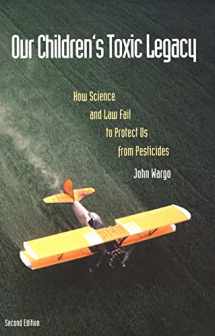
Our Children's Toxic Legacy: How Science and Law Fail to Protect Us from Pesticides
Book details
Summary
Description
During this century, hundreds of billions of pounds of pesticides have been released to the global environment. How are we exposed to them? What can we do to protect ourselves? In this extraordinary analysis, John Wargo, one of the nation's leading experts in pesticide policy, traces the history of pesticide law and science, with a focus on the special hazards faced by children.
By 1969, nearly 60,000 separate pesticide products were registered for use by the U.S. government, each with the expectation that pesticides could be used safely, that they quickly broke down into harmless substances, or that dangerous levels of exposure could be accurately predicted and somehow avoided. Faith in these assumptions was gradually eroded as experts grew to understand the persistence, movement, and toxicity of the chemicals involved. Nevertheless, government continues to hold the discretion to balance risks against economic benefits in its licensing decisions. The underlying legal strategy, Wargo claims, has been one that places extraordinary faith in government's ability to somehow ensure that only safe levels of contamination and exposure occur. And the effect has been systematic neglect of those exposures and risks faced by children.
Wargo presents a compelling case that children are more heavily exposed to some pesticides than adults and are especially vulnerable to some adverse effects. How should the fractured body of environmental law be repaired to manage the distribution of risk? This is the central question Wargo addresses as he suggests fundamental reforms of science and law necessary to understand and contain the health risks faced by children.


We would LOVE it if you could help us and other readers by reviewing the book
Book review



